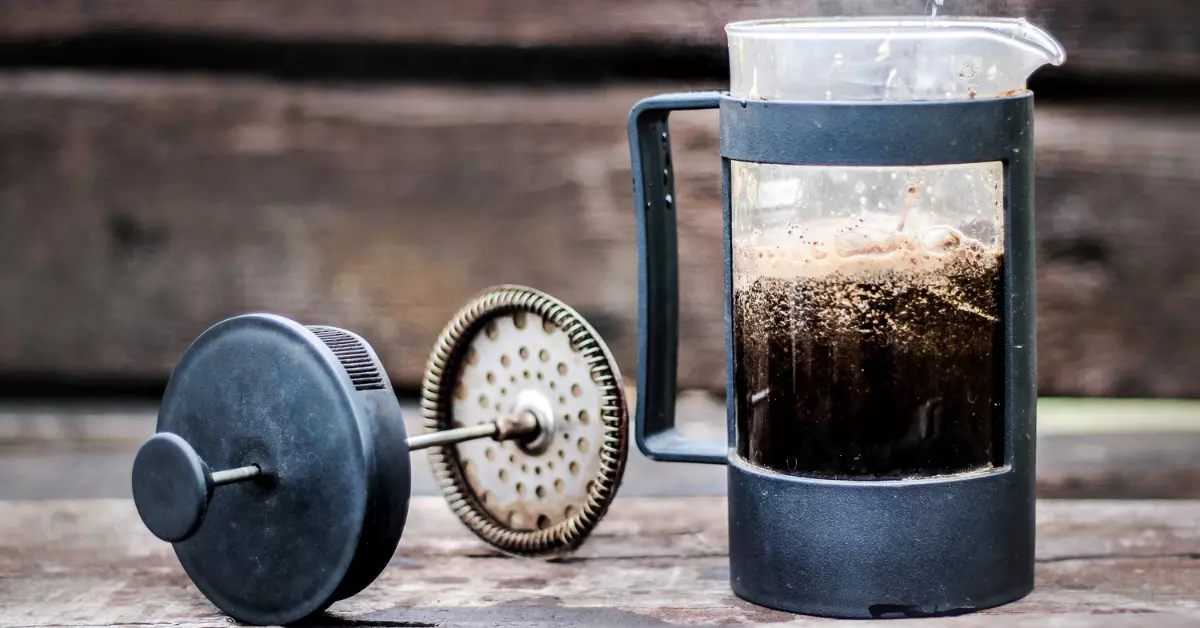
Are you exploring different options for coffee? Many coffee lovers pick Coffee Without Filter. This coffee doesn’t use any filter. Is it good or bad for you? Well, it depends on your preferences, body type, and other factors. Do you know how to make Coffee Without a Filter? Is it beneficial or not? What is the difference between filtered and filterless coffee? Let’s dig in to find out.
Coffee Without Filter is a way to brew coffee without using paper, cloth, or any other filtering tools. This method keeps more of the natural oils and fine particles from the coffee grounds, resulting in a bold and intense flavor. There are various methods to enjoy Coffee Without Filter, such as French Press, Turkish Coffee, Percolator, Moka Pot, Espresso, and Cowboy Coffee. These coffee styles offer a rich and delightful taste experience.
6 Common Ways to Make Coffee Without Filter
Imagine, you don’t have a filter or coffee machine to make your coffee. What will you do? Obviously, there are some ways to make Coffee Without Filter. Have a look at the following table to know the methods well.
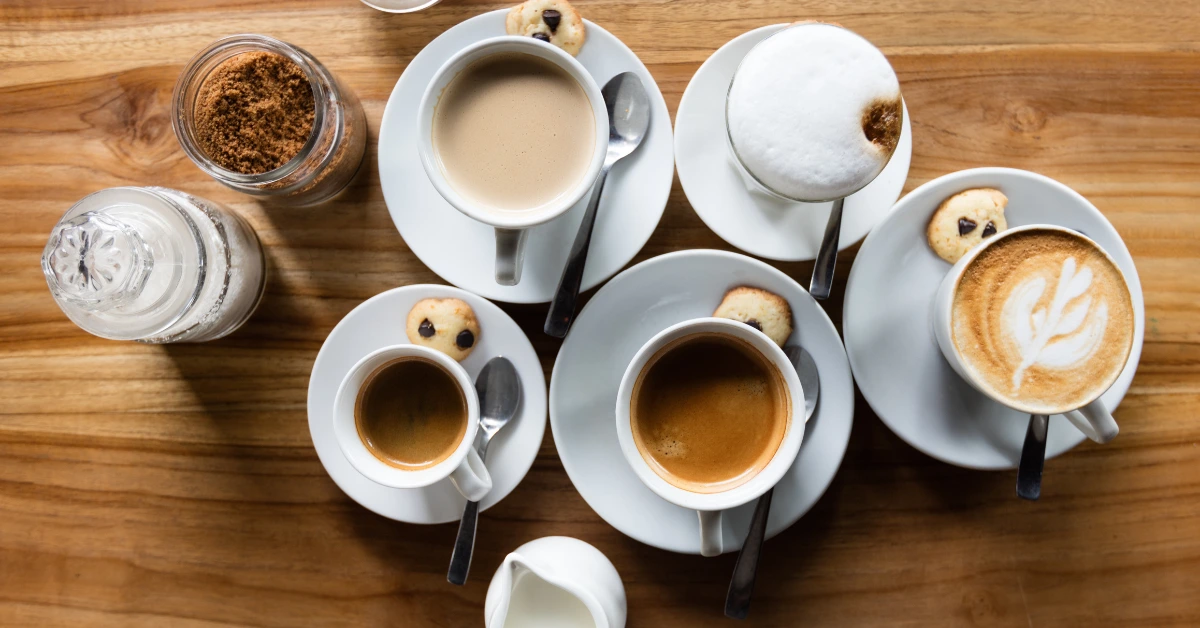
| Unfiltered Coffee-Making Methods | Equipment Needed |
| French Press | French Press (a big cup with a special lid) |
| Turkish Coffee | Cezve or Ibrik (special pot), Superfine coffee |
| Moka Pot | Moka Pot (coffee maker for the stove) |
| Percolator | Percolator (one kind of pot) |
| Espresso | Espresso machine,Fine coffee |
| Cowboy Coffee | Pot for boiling,Coffee grounds |
Remember, the taste of your coffee depends on its type and how fine or chunky it is.
Recipe for Coffee Without Filtering Tools
If you want to select any of these methods, you have to follow some instructions. Let’s discuss the coffee-making methods one by one.
French Press
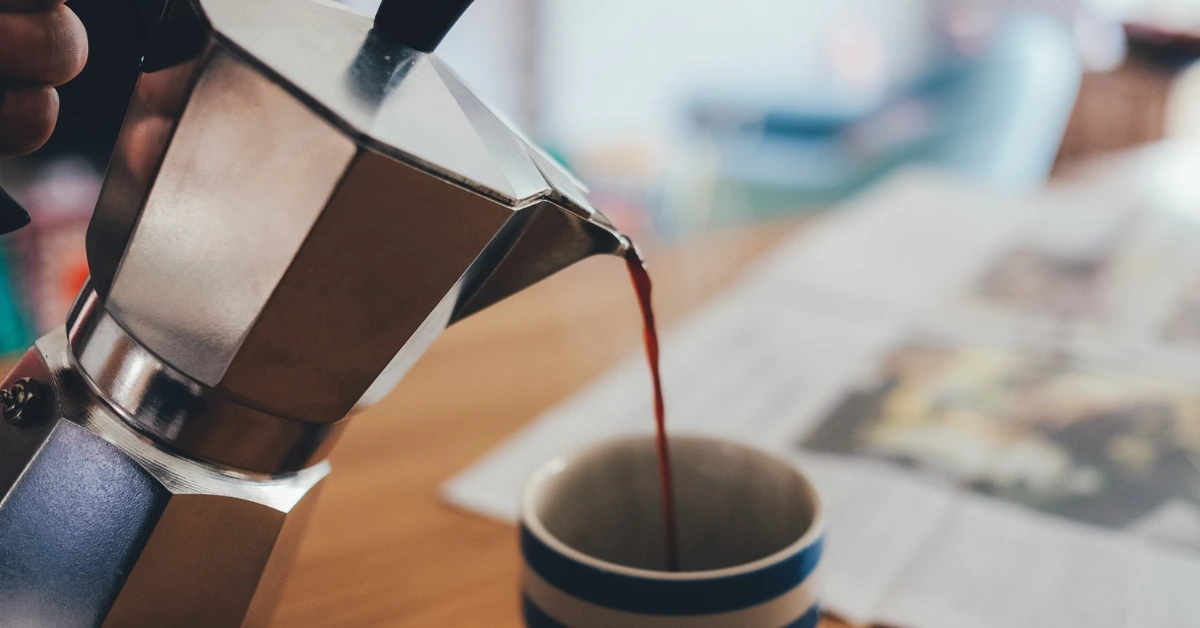
Ingredients
- About 30 grams (or 1/3 cup) of whole coffee beans, enough for a 4-cup (32-ounce) French Press.
- 4 cups (or 32 ounces) of water.
Instructions
- Grind your coffee beans into big pieces, like breadcrumbs.
- Make your water hot in a kettle. When it boils, wait a minute to let it cool down a bit. The best temperature is around 200 degrees Fahrenheit (or 93 degrees Celsius).
- Put coffee in the French Press (a big cup with a special lid). Slowly pour the hot water over the coffee so that all the coffee gets wet.
- Give everything a gentle stir. Put the lid on the French Press but pull the plunger up. The plunger is a rod with a handle on one end of the French Press. Let everything sit for 4 minutes. If you want your coffee stronger, you can wait a little longer.
- When the time is up, push the plunger all the way down slowly and carefully. Pour your coffee right away.
Turkish Coffee
Ingredients
- 1 cup of water (use the same cup you’ll drink from to measure)
- 1-2 big spoonfuls of Turkish coffee
- Sugar (optional)
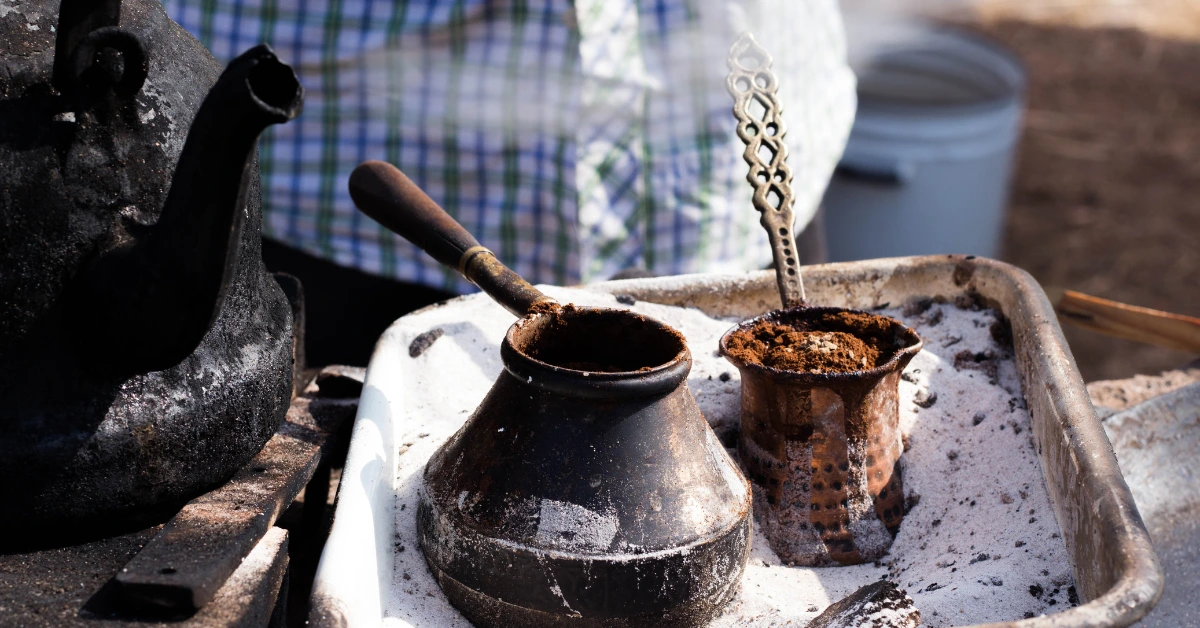
Instructions
- Take one cup of cold water and pour it into a small coffee pot. This pot is sometimes called a Cezve or Ibrik.
- Add 1 to 2 spoonfuls of Turkish coffee to the pot for each cup of water.
- If you like your coffee sweet, add sugar now. In Turkey, they usually have four levels of sweetness; none, a little, medium, and a lot.
- Put the coffee pot on low heat. Stir slowly until the sugar (if you’re using it) is all mixed in. Keep an eye on it because Turkish coffee can overflow easily.
- Just before the coffee starts to boil, take the pot off the heat. Pour a little bit of the coffee into each cup with some foam.
- Then put the pot back on the heat. When the coffee starts to boil again, pour the rest into the cups. Let the coffee sit for a minute before you drink it so the coffee grounds can settle on the bottom.
Moka pot
Ingredients
- Moka Pot
- Water
- Medium ground coffee
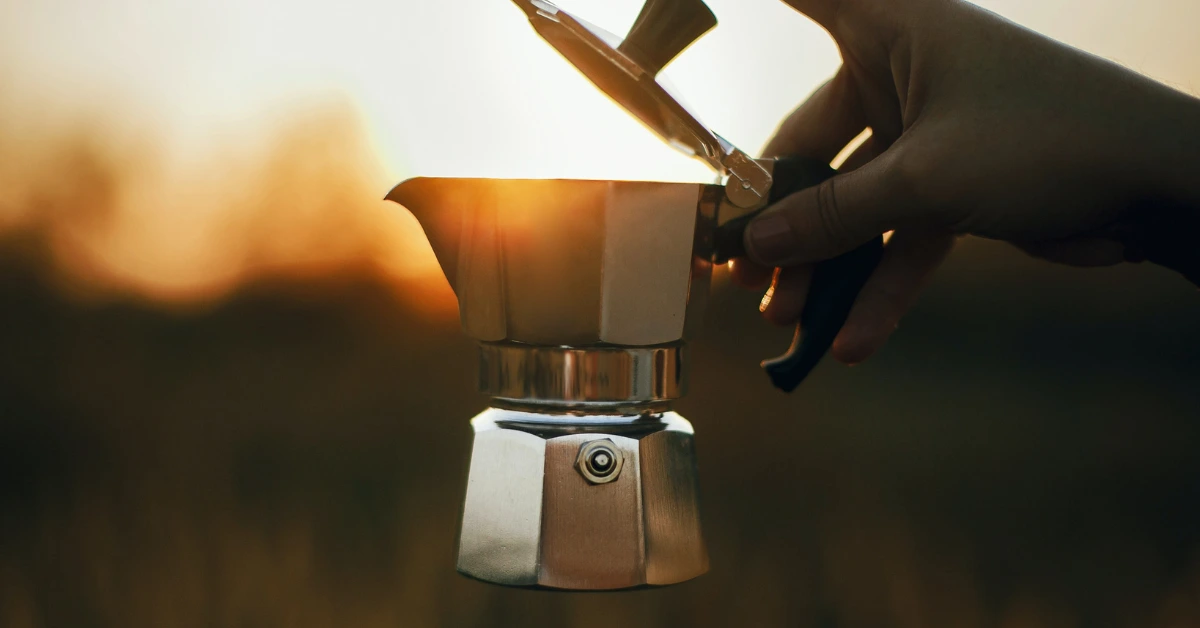
Instructions
- Fill the bottom part of the Moka Pot with cold water in a moderate amount. Put your coffee into the filter.
- Put the filter into the bottom part of the Moka Pot, and then screw the top part onto it. Then put it on medium heat.
- As soon as the top part is full of coffee, take the Moka Pot off the heat. You should be careful with the hot Moka pot.
- Pour your coffee right away so it doesn’t get too strong and bitter.
Percolator
Ingredients
- Percolator (one kind of pot)
- Water
- Coarse ground coffee (similar to breadcrumbs)
Instructions
- Fill your Percolator with cold water. It is good to use about 8 ounces of water for each cup of coffee.
- Add your coffee to the coffee basket in the Percolator. A good amount to start with is 1 tablespoon of coffee for every 8 ounces of water.
- Put the tube into the Percolator, then put the coffee basket and close the lid.
- If your Percolator goes on the stove, put it on medium heat. If it is electric, just plug it in and turn it on. This process will take about 5 to 10 minutes to make the coffee ready.
- When your coffee is ready, take the Percolator off the heat or turn it off if it’s electric. Take the coffee basket out of it and throw away the used coffee. Then pour your freshly brewed coffee.
Espresso
Ingredients
- Espresso machine
- Fresh coffee beans
- Water
Instructions
- Take your espresso machine, turn it on, and heat it. It’s really important to have your coffee in tiny pieces for Espresso. Use about 18-20 grams of coffee for two shots of Espresso.
- Put your ground coffee into the portafilter (the small metal basket that fits into the Espresso machine). Then put the portafilter into the machine.
- For two shots of Espresso, it should take about 20-30 seconds to make.
- Once your Espresso is ready, pour it and drink it right away.
Cowboy Coffee
Ingredients
- Fresh coffee, big pieces
- Cold water
- A pot or kettle
Instructions
- Take a pot and fill it with cold water. Use about 8 ounces of water for each cup of coffee. Put the pot on heat and wait until it’s almost boiling.
- Take the pot off the heat and add your coffee. You can use 2 tablespoons of coffee for every 8 ounces of water. Let the coffee sit in the hot water for about 4 to 5 minutes.
- You can add a little bit of cold water or tap the sides of the pot gently to make the coffee grounds settle on the bottom of the pot.
- Pour the coffee into your cup slowly and carefully. Now you can enjoy your Cowboy coffee
Difference Between Filtered Coffee and Unfiltered Coffee
There are some common differences between filtered and unfiltered coffee. Check out the following table to know the differences between both types of coffee.
| Basis | Coffee With Filter | Coffee Without Filter |
| Flavor | Typically lighter and smoother,Less bitter | Often richer and fuller due to the presence of more oils and small particles |
| Intensity or Strength | Strength can vary,Possibly lighter because paper filters remove some substances | Usually more intense as no substances are removed by paper filters |
| Sediment or Layer in the Cup | Rarely has sediment as the filter catches the coffee grounds | May have sediment or \”sludge\”, especially if the coffee grounds are too fine or with methods like Turkish coffee. |
| Health Considerations | Contains less Cafestol (a compound that can increase cholesterol levels) | Contains more Cafestol,This could be a concern for those monitoring their cholesterol |
| Environmental Impact | Creates waste due to the use of paper filters | More eco-friendly as no paper waste is generated, though cleaning may require more effort |
| Expense | Initial costs are lower but need to continually purchase filters | Initial costs are higher for equipment, but no regular expenses for filters |
8 Key Considerations about Making Coffee Without Filter
Making Coffee Without Filtering tools can offer a unique brewing experience. You can get a different flavor profile than filter coffee. However, there are a few key considerations about filterless coffee to keep in mind. Let’s know the key considerations briefly.
1. Coffee Grind
Some ways of making coffee need big coffee pieces while others need small pieces. We have already mentioned that French Press or Cowboy Coffee require big coffee pieces. But Espresso or Moka pot need small pieces. If your coffee pieces are too big or too small, your coffee might be weak or too strong. It can also have a lot of coffee pieces in it.
2. Water Temperature
Different ways of making coffee need the water to be at different temperatures. For example, for Espresso, you need very hot water. On the other hand, for the French press, the water should be a little less hot.
3. Brew Time
How long you let your coffee brew can change how it tastes. Suppose, you let your coffee brew too long. Then it might be too strong and taste bitter. Similarly, if it doesn’t brew long enough, it might taste weak. So knowing the perfect time for brewing is important.
4. Sediment or Layer
As there is no filter in this type of coffee, you might get some coffee pieces in your cup. You can keep this from happening by using bigger coffee pieces. If you let the coffee sit after brewing, it’ll create a sediment or layer at the bottom of your cup.
5. Cleaning Up
It might be harder to clean up when you makeunfiltered coffee.. It is harder to get rid of the coffee grounds. So, the cleaning process needs time and attention.
6. Freshness of Coffee
Is your coffee good and fresh? It is important to know how good and fresh your coffee is. Imagine, you have rotten coffee beans. Will your coffee taste good? It is not possible. The taste of your coffee depends on the freshness. It is usually best to get whole coffee beans and make them into pieces right before you brew.
7. Ratio of Coffee and Water
The perfect ratio of coffee and water is important. It decides how strong and flavorful your coffee is. The best amount can change depending on your preferences.
8. Patience
Making coffee without filter can take more time and care. If you have patience, this process can be fun. Remember, everyone likes their coffee a little differently. It can be fun to try different ways of making coffee. You can try different kinds of coffee beans, different sizes of coffee pieces, and different amounts of coffee and water. This will help you to find the way you like your coffee best.
Is Coffee Without Filter Harmful?
Coffee Without Filter is not harmful in general. But it has some downsides. Most importantly, for those who have serious health issues. Let’s discuss the harmful sides in brief.

1. Increased Cholesterol
Coffee has some compounds like cafestol and kahweol. These components can make your bad cholesterol (also known as LDL) levels go up. Normally, a paper filter would catch these. If you don’t use a filter, more of them get into your coffee.
2. More Oils
Coffee made without a filter has more oils in it. These oils can make your coffee taste really rich. But again they can make your cholesterol go up.
3. Presence of Sediments
If you don’t use a filter, you might get tiny coffee pieces or \”sediment\” in your coffee. This can change how your coffee tastes and feels. The sediments can also add to the amount of Cafestol you’re drinking.
4. Digestive Issues
Some people can have digestive problems by having unfiltered coffee. As this coffee contains more oils and acids, it can create a stomach ache or heartburn. Though this issue is not the same for everyone. Anything you eat or drink, it’s important not to have too much. Also, whether these things are a problem for you can depend on your health. Moreover, it depends on how often and how much coffee you drink. Moderate consumption of Coffee that is made without a Filter is not harmful.
Conclusion
To sum up, we can say making Coffee Without Filter can be fun. Brewing methods like the French press, Espresso, Turkish coffee, Cowboy coffee etc are used mainly by coffee lovers. As unfiltered coffee holds oils and tiny pieces of coffee, it has a rich taste. But when you’re making coffee without filtration tools, you need to be careful about certain things. This is to keep the taste flavourful. These includes the size of the coffee pieces, how hot the water is, and how long you let it brew. In the end, whether you make coffee with or without a filter is really up to you and what you like. It’s all part of the fun of trying different kinds of coffee and finding what you like best.

I am Mojoon, a certified and award-winning barista by choice, with 7 years of experience in the field. I have served and trained coffee shop baristas worldwide. I worked at Krispy Kreme for an extended period, and now I aim to help regular people brew coffee like me. I pursue this job with my passion for writing and also provide one-on-one coaching for newly minted baristas.